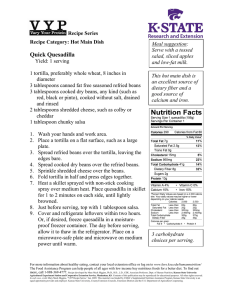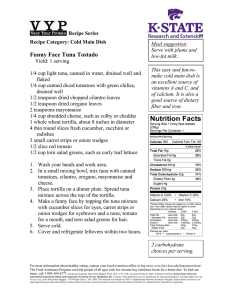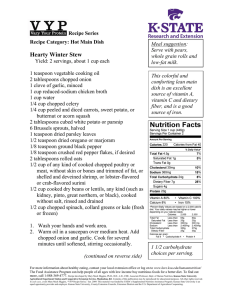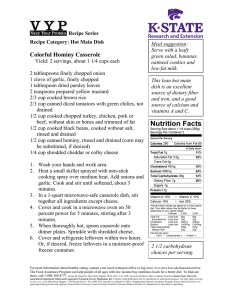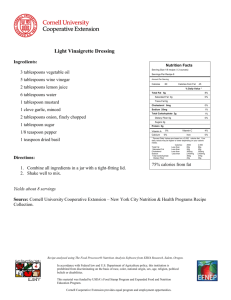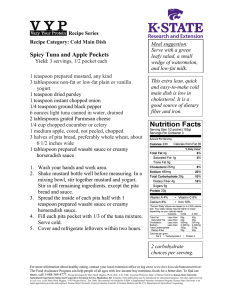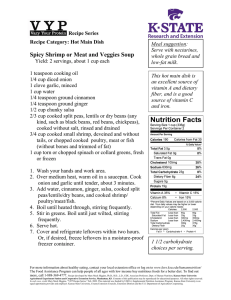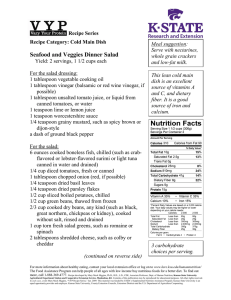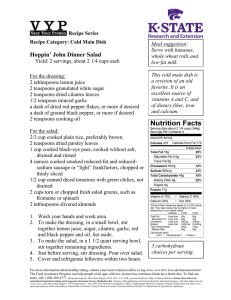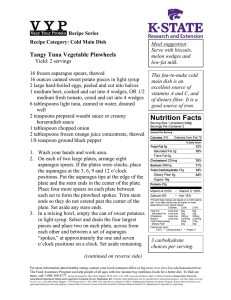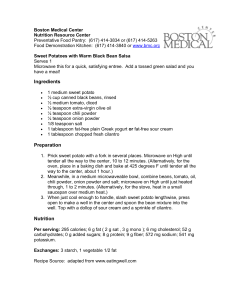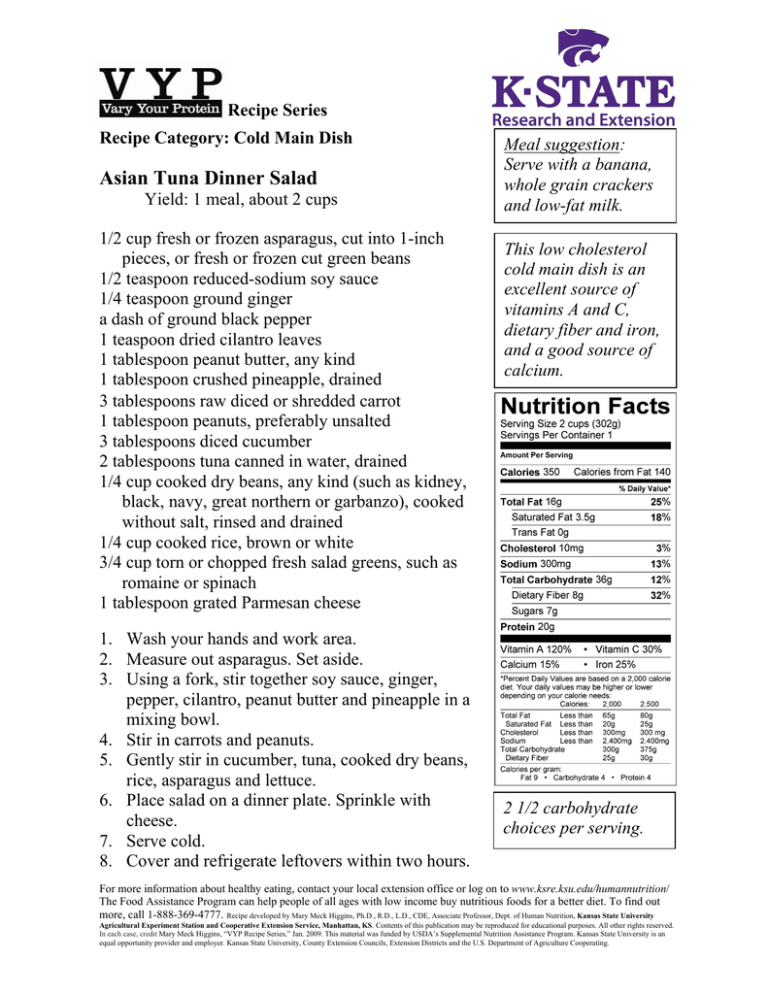
Recipe Series
Recipe Category: Cold Main Dish
Asian Tuna Dinner Salad
Yield: 1 meal, about 2 cups
1/2 cup fresh or frozen asparagus, cut into 1-inch
pieces, or fresh or frozen cut green beans
1/2 teaspoon reduced-sodium soy sauce
1/4 teaspoon ground ginger
a dash of ground black pepper
1 teaspoon dried cilantro leaves
1 tablespoon peanut butter, any kind
1 tablespoon crushed pineapple, drained
3 tablespoons raw diced or shredded carrot
1 tablespoon peanuts, preferably unsalted
3 tablespoons diced cucumber
2 tablespoons tuna canned in water, drained
1/4 cup cooked dry beans, any kind (such as kidney,
black, navy, great northern or garbanzo), cooked
without salt, rinsed and drained
1/4 cup cooked rice, brown or white
3/4 cup torn or chopped fresh salad greens, such as
romaine or spinach
1 tablespoon grated Parmesan cheese
1. Wash your hands and work area.
2. Measure out asparagus. Set aside.
3. Using a fork, stir together soy sauce, ginger,
pepper, cilantro, peanut butter and pineapple in a
mixing bowl.
4. Stir in carrots and peanuts.
5. Gently stir in cucumber, tuna, cooked dry beans,
rice, asparagus and lettuce.
6. Place salad on a dinner plate. Sprinkle with
cheese.
7. Serve cold.
8. Cover and refrigerate leftovers within two hours.
Meal suggestion:
Serve with a banana,
whole grain crackers
and low-fat milk.
This low cholesterol
cold main dish is an
excellent source of
vitamins A and C,
dietary fiber and iron,
and a good source of
calcium.
2 1/2 carbohydrate
choices per serving.
For more information about healthy eating, contact your local extension office or log on to www.ksre.ksu.edu/humannutrition/
The Food Assistance Program can help people of all ages with low income buy nutritious foods for a better diet. To find out
more, call 1-888-369-4777. Recipe developed by Mary Meck Higgins, Ph.D., R.D., L.D., CDE, Associate Professor, Dept. of Human Nutrition, Kansas State University
Agricultural Experiment Station and Cooperative Extension Service, Manhattan, KS. Contents of this publication may be reproduced for educational purposes. All other rights reserved.
In each case, credit Mary Meck Higgins, “VYP Recipe Series,” Jan. 2009. This material was funded by USDA’s Supplemental Nutrition Assistance Program. Kansas State University is an
equal opportunity provider and employer. Kansas State University, County Extension Councils, Extension Districts and the U.S. Department of Agriculture Cooperating.

